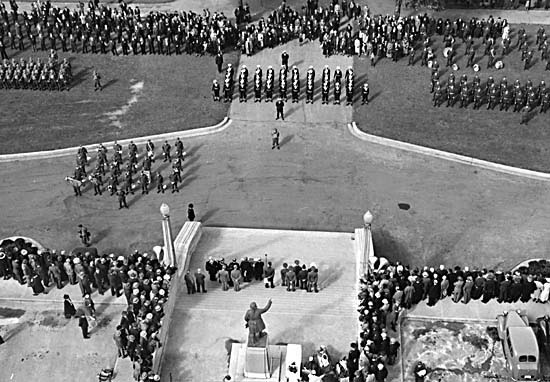Making History Class More Interesting: Using Multiple Perspectives to Teach World War II
Posted by Katherine Joyce
26 Mars 2013 - 10:50am
26 Mars 2013 - 10:50am
 Recently, a group of high school students I was working with told me how boring they find history class, especially Canadian history. Now, I must admit that although I have heard this sentiment expressed many times over the years, it just about broke my Canadian history-loving heart. So I asked some questions: what were the students learning about? Why did they find it boring?
Recently, a group of high school students I was working with told me how boring they find history class, especially Canadian history. Now, I must admit that although I have heard this sentiment expressed many times over the years, it just about broke my Canadian history-loving heart. So I asked some questions: what were the students learning about? Why did they find it boring?
It turned out that the group in question was preparing for a unit test on World War II, a time period that I find fascinating. However, the focus on names and dates, and a test format based on ‘identify and explain’ questions was getting them down.
I brought this up with some of my colleagues (we work with high school-aged youth in an educational setting). We discussed the challenges of the classroom: a provincial curriculum which mandates which facts need to be learned; the sheer volume of material to be covered; and students focused on achieving high marks. But we also discussed ways to make the history classroom more interesting for students, most of which involved incorporating multiple perspectives in the classroom.
The National History Education Clearinghouse’s ‘Ask a Master History Teacher’ feature explores the questions “What is multiperspectivity in history?” The master teacher argues that teachers should incorporate multiple perspectives into their classrooms for two main reasons: (1) in order to see the issue from the points of view of non-dominant groups, such as women, those with lower economic status, or ethnic minorities; and (2) because in interpreting the past, historians piece together a variety of perspectives.
Now, there are many ways in which to do this. Students can be assigned different personas, either based on real individuals or composites, and then engage in discussion, debate, or written work. They can each be asked to look at multiple perspectives, or, to each be responsible for one, and share this perspective with the class. It can be done looking at a small topic or an overarching theme. Primary sources can, and should, be used.
There are many databases of primary sources available for teachers looking to incorporate multiple perspectives into their lessons on World War II. Canadian databases include:
• The Canadian War Museum’s ‘Democracy at War: Canadian Newspapers and the Second World War,’ a database of newspaper clippings from World War II
• Library and Archives Canada ‘Faces of War,’ which features a database of photographs from World War II
• The Chinese Canadian Military Museum’s ‘Veteran Stories’ database is a collection of stories of Chinese Canadians who served in the military during World War II
• Historica-Dominion’s ‘The Memory Project’ is a collection of oral histories of World War II told by Canadian veterans
For those teaching American history:
• The National World War II Museum in New Orleans has a collection of primary sources available for use by teachers, as well as guides for using them in the classroom
• Eastern Illinois University has put together great selection of resources, including primary sources and lesson plans about World War II
However, incorporating multiple perspectives in the classroom raises questions about whose perspectives are valid. Can we really provide a strong cross-section of perspective in the classroom? Surely it is appropriate to look at Canada’s involvement in the Second World War from the perspective of a young woman working in a munitions factory, a soldier at the front, the Prime Minister, or an interned Japanese Canadian. But is it also appropriate to look at the Holocaust from the perspective of an SS officer or a Nazi official? If so, can we ask students to adopt these personas in a classroom debate? If not, how do we make sure these perspectives are adequately addressed? Facing History and Ourselves explores these issues in a variety of their lesson plans, including ‘Exploring Obedience: Germany under the Nazis'. These questions are challenging, and, I think, are in themselves worthy of exploring with your students.
How do you employ multiple perspectives in your history classroom?
Photo: Address at Vancouver City Hall to mark Canada's entry into the Second World War. Copyright expired, Wikipedia Commons. Original held at the City of Vancouver Archives.
- Se connecter ou créer un compte pour soumettre des commentaires

